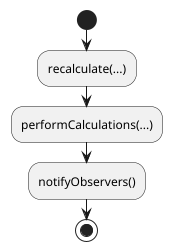The switch..case mammoth
The switch..case mammoth
As a Java developer, I think that there isn’t anything uglier than a piece of code having in its middle a switch with
43 cases. Whenever I’m seeing something like this, I remember the Windows desktop applications of my beginnings. C++ was
already the programming language at that time but most of the developers were writing C code and compiling it with the
Borland or Microsoft C++ compiler. The other alternative was the IBM C++ compiler for OS/2 and, then, we were dealing with
Presentation Manager, Communication Manager and others OS/2 specific stuff, including Database Manager, which came with
a mini DB2 version. A couple of years later, all this stuff got unified in Windows NT 4 but, at that moment, I have had
already moved to Unix and Linux, and it was definitive.
Anyway, I still remember these huge switch..case structures, on several listing pages, supposed to process all the
possible messages, like WM_INITDIALOG, WM_COMMAND, etc., and to react to different user actions through menus,
controls, accelerators and others. They were, already at that time, broadly inadvisable and largely discouraged, but
commonly adopted. So, imagine my surprise when, recently on this site, I came across a post discussing a design solution
for exception handling, based on a 43 cases switch statement. Hence, the idea to write this blog ticket.
A realistic use case
In order to illustrate my point, I was looking for an use case and, while at it, for a realistic one, if possible. The previously mentioned Windows applications would have been perfect for that, but I left this field a couple of decades ago. Accordingly, I tried to find something in FinTech, which my current field and, since most of the clients I’m working for are banks and other financial organisations, I came to imagine a simplified derivatives example.
Okay so, for starters, derivatives are titles whose values are contingent on the values of underlying assets, such that interest rates or commodities like oil. They “derive” their values from the ones of the contingent resources. There are several types of derivatives: options, forwards, futures, swaps, warrants, etc. and, without going into details, they all have prices, which are calculated in a specific way, depending on the derivative type.
In order to clarify expectations, I have prepared a simple Java project (https://github.com/nicolasduminil/switch-the-mammoth.git).
If you look at, you can see the class Title which implements several methods for the price calculation, specific to each
type of derivative. Let’s look at it:
public class Title extends Observable
{
private final TitleType titleType;
public Title(TitleType titleType)
{
this.titleType = titleType;
}
public BigDecimal recalculate (CalculationData calculationData) throws IllegalTitleTypeException
{
BigDecimal result = performRecalculations(calculationData);
this.notifyObservers();
return result;
}
public BigDecimal performRecalculations(CalculationData calculationData) throws IllegalTitleTypeException
{
BigDecimal subtract = calculationData.spotPrice().subtract(calculationData.strikePrice());
BigDecimal rate = calculationData.riskFreeRate().multiply(calculationData.timeToExpiry());
switch (titleType)
{
case OPTION:
// Option value: max(0, spotPrice - strikePrice) + timeValue
BigDecimal intrinsicValue = subtract.max(BigDecimal.ZERO);
BigDecimal timeValue = calculationData.volatility()
.multiply(calculationData.timeToExpiry()).multiply(new BigDecimal("0.1"));
return intrinsicValue.add(timeValue);
case FUTURE:
// Future value = spotPrice * e^(riskFreeRate * timeToExpiry)
BigDecimal multiplier = BigDecimal.valueOf(Math.exp(rate.doubleValue()));
return calculationData.spotPrice().multiply(multiplier);
case FORWARD:
// Forward value = spotPrice * (1 + riskFreeRate * timeToExpiry)
BigDecimal rateComponent = BigDecimal.ONE.add(rate);
return calculationData.spotPrice().multiply(rateComponent);
case SWAP:
// Swap value = notional * (fixedRate - floatingRate) * timeToExpiry
BigDecimal rateDiff = calculationData.fixedRate().subtract(calculationData.floatingRate());
return calculationData.notional().multiply(rateDiff).multiply(calculationData.timeToExpiry());
case WARRANT:
// Warrant value = option value * dilution factor
BigDecimal optionValue = subtract.max(BigDecimal.ZERO);
BigDecimal dilutionFactor = new BigDecimal("0.95"); // 5% dilution
return optionValue.multiply(dilutionFactor);
default:
throw new IllegalTitleTypeException("### Illegal title type %s".formatted(titleType.name()));
}
}
}
As you can see, each derivative type, be it option, future, forward, etc., has its own price calculation algorithm. These
algorithms are all implemented in the performRecaclculations(...) method. It is invoked by the recalculate(...) method
and, once the recalculations done, all the class observers are notified, such that to eventually update prices.
Okay, so as you probably have guessed, now that we have looked at this class, my point is to say that, should you ever see some code designed in this manner, then you mandatory have to refactor it. But why is that, what might be wrong with this code ? Why do you need to refactor it when all the KISS (Keep It Simple Stupid) advocates will tell you how easy to understand and convenient it is ? And as a matter of fact, I have to admit that, for being stupid, it is really stupid and, hence, perfect for any KISS apologist. So to answer this question, I could talk about OCP (Open Closed Principle), tightly coupling, testability, reusability, extensibility, modularity and other “[a-z]*ity” words. But instead, I prefer to say just that: this code is ugly.
Yes, you got it right, ugly ! And yes, ugliness, or more exactly esthetics, is also a software architecture and design criteria. In this respect, software architecture is similar to civil architecture. Imagine two house projects side by side, one having only one large room with everything inside, a second one with different living spaces, bathrooms, kitchens, designed such that to fulfil the needs of the inhabitants, where the architect has meticulously designed every detail and carefully planned the finishing touches. Which one would you prefer ? Well, software architecture is similar: it has to be beautifull.
Refactoring the mammoth: step 1
Okay, so let’s refactor now our switch..case mammoth. And our first approach will be using polymorphism. Having said
that, I’m aware that I lost almost all my OOP phobist readers who hate polymorphism because it is not supported by Rust.
Well, when I’m saying that Rust doesn’t support polymorphism, what I’m trying to say is that they needed to change
the polymorphism definition in order to claim that Rust supports it. Anyway, Rust is beyond OOP and,
accordingly, it doesn’t have to support polymorphism, neither anything else. Rust is beyond everything.
But this is another discussion.
Let’s look at the class diagram below:

As we can see, this class diagrams models the derivatives business domain in the form of a class hierarchy whose root is the
AbstractTitle class which, as its name implies, is an abstract one. It extends Observable such that it supports observers
that it could notify as soon as recalculations were done. Each derivative type is, subsequently, modelled as a subclass of
this abstract class. This is important in order to recognize the fact that options, futures, forwards and warrants are all
derivatives.
The recalculations are done by two methods: recalculate(...) and performCalculations(...), as shown by the activity
diagram below:

Here is the code:
public abstract class AbstractTitle extends Observable implements Derivative
{
protected TitleType titleType;
protected AbstractTitle(TitleType titleType)
{
this.titleType = titleType;
}
public BigDecimal recalculate(CalculationData calculationData) throws IllegalTitleTypeException
{
BigDecimal titlePrice = performCalculations(calculationData);
this.notifyObservers();
return titlePrice;
}
public abstract BigDecimal performCalculations(CalculationData calculationData) throws IllegalTitleTypeException;
}
So, the recalculate(...) method is in charge of the price calculation and, since this process is different for each
type of derivative, the effective algorithm implementation is delegated to the performCalculations(...) method,
declared here as abstract. Then, it is the obligation of each subclass to implement this method. For example, here is
how it looks in the Option class:
public class Option extends AbstractTitle
{
protected Option(TitleType titleType)
{
super(titleType);
}
// Option value: max(0, spotPrice - strikePrice) + timeValue
@Override
public BigDecimal performCalculations(CalculationData calculationData)
{
BigDecimal intrinsicValue = calculationData.spotPrice()
.subtract(calculationData.strikePrice()).max(BigDecimal.ZERO);
BigDecimal timeValue = calculationData.volatility()
.multiply(calculationData.timeToExpiry())
.multiply(new BigDecimal("0.1"));
return intrinsicValue.add(timeValue);
}
@Override
public TitleType getTitleType()
{
return TitleType.OPTION;
}
}
What we’ve implemented here is the strategy pattern, also called the template method one. But what about this
Derivative interface that can be seen in the class diagram above ? Well, it allows us to handle in a
generic way derivatives. Now, given this new implementation, our derivative price calculation is as simple as that:
...
Derivative option = ... //some abstract factory to build options
option.recalculate(...);
...
Let’s look now more carefully at how we could improve further our design.
Refactoring the mammoth: step 2
Okay, so we refactored our initial Title class such that to replace the switch..case mammoth by polymorphism and,
the result of this refactoring is to have 6 classes instead of one. Here, our friends, the KISS advocates, will throw up
their hands in horror. And they are right to point that our design here doesn’t observe the KISS principle
as it isn’t stupid at all. This refactoring is what they call over-engineering and they identify it as being the most
serious issue in the software industry. As opposed to them, I think that the most serious issue of the software industry
is the poor design and the over-simplification, leading to stupid implementations and ugly code.
So, let’s go now further and, after the strategy pattern, lets apply the registry one as well. Look at the
CalculationRegistry class below:
public class CalculationRegistry<T, R>
{
private final Map<T, Function<R, BigDecimal>> strategies = new HashMap<>();
public void register(T key, Function<R, BigDecimal> strategyFunc)
{
strategies.put(key, strategyFunc);
}
public BigDecimal apply(T key, R request)
{
return strategies.getOrDefault(key, r -> BigDecimal.ZERO).apply(request);
}
public void unregister(T key)
{
strategies.remove(key);
}
public void clear()
{
strategies.clear();
}
public Map<T, Function<R, BigDecimal>> getStrategies()
{
return strategies;
}
}
This is a generic class parameterized with a derivative type and a price calculation strategy. The T generic
argument represents a derivative type while the R one is the strategy to be applied to calculate the given
derivative price. It implements the registry pattern, quite commonly used for the kind of processing that we’re
here at, by maintaining a map which associates a calculation strategy to a derivative type. For example:
Calculationregistry<TitleType, CalculationData> calculationRegistry = new CalculationRegistry<>();
calculationRegistry.register(TitleType.OPTION, data ->
{
BigDecimal intrinsicValue = data.spotPrice()
.subtract(data.strikePrice()).max(BigDecimal.ZERO);
BigDecimal timeValue = data.volatility()
.multiply(data.timeToExpiry())
.multiply(new BigDecimal("0.1"));
return intrinsicValue.add(timeValue);
});
The code above registers the strategy required for the price calculation of options. Now, in order to effectively perform the operation:
BigDecimal optionPrice = calculationRegistry.apply(TitleType.OPTION, testData);
This way we’re embracing the functional programming style available in Java since its 8th release. This allows us to
use strategies, i.e. methods, as data, by passing them as input arguments and storing them in maps. Don’t hesitate to
look at the unit test TestCalculationRegistry to make sure you understand how everything works. And to run these tests.
Conclusion: while over-engineering might be an issue, leading to hardly maintainable code, the most important issue of the software industry is the over-simplification and the poor design. So, keep it simple but not simplistic and, above all, not stupid !

